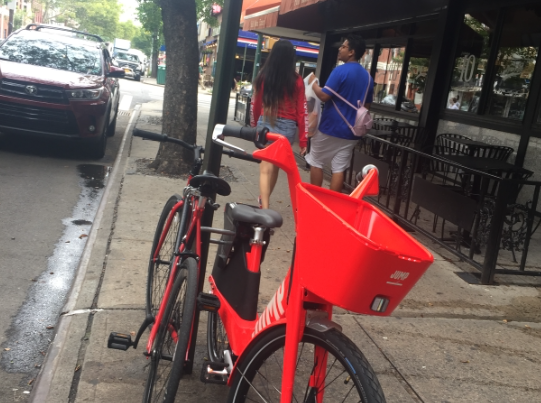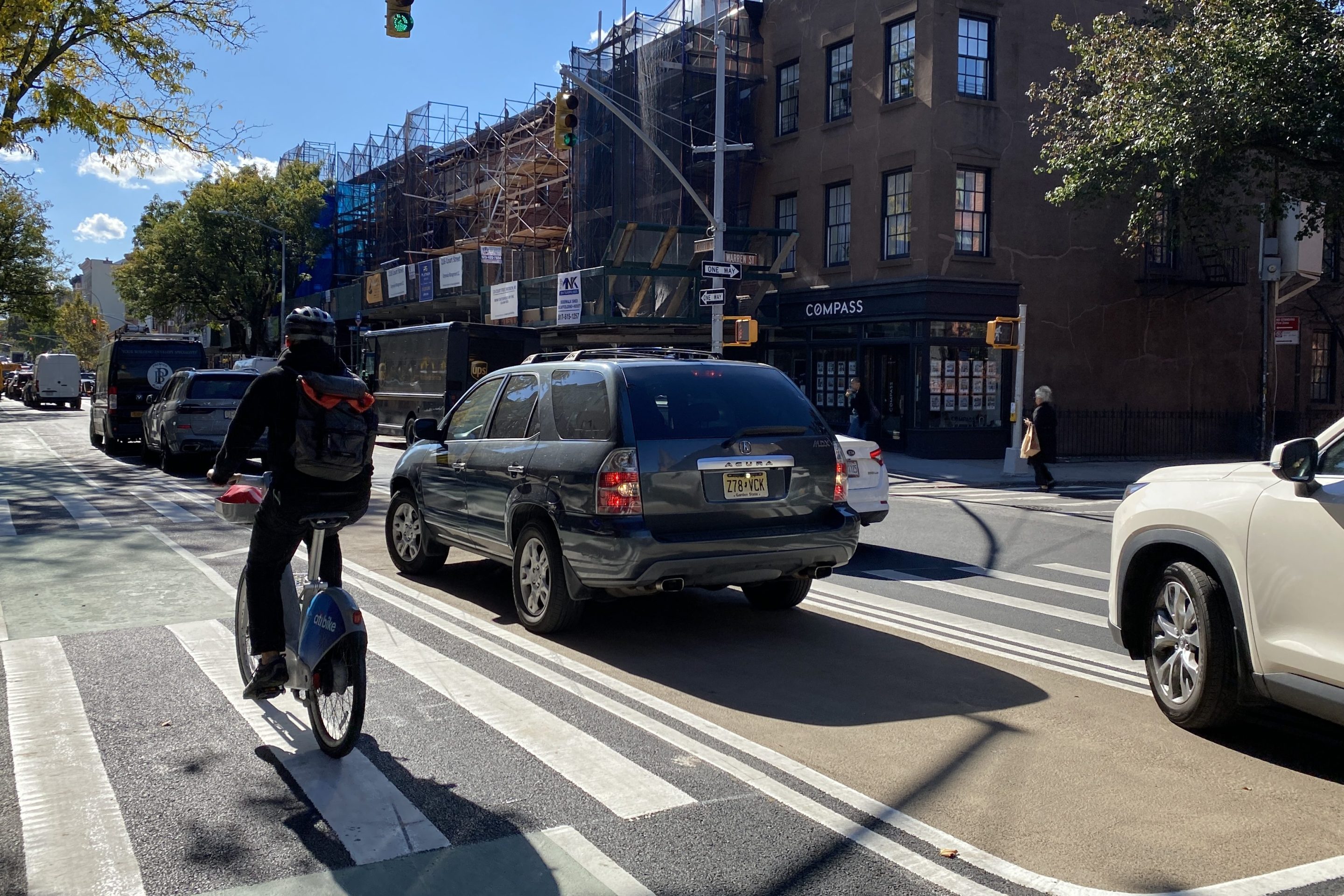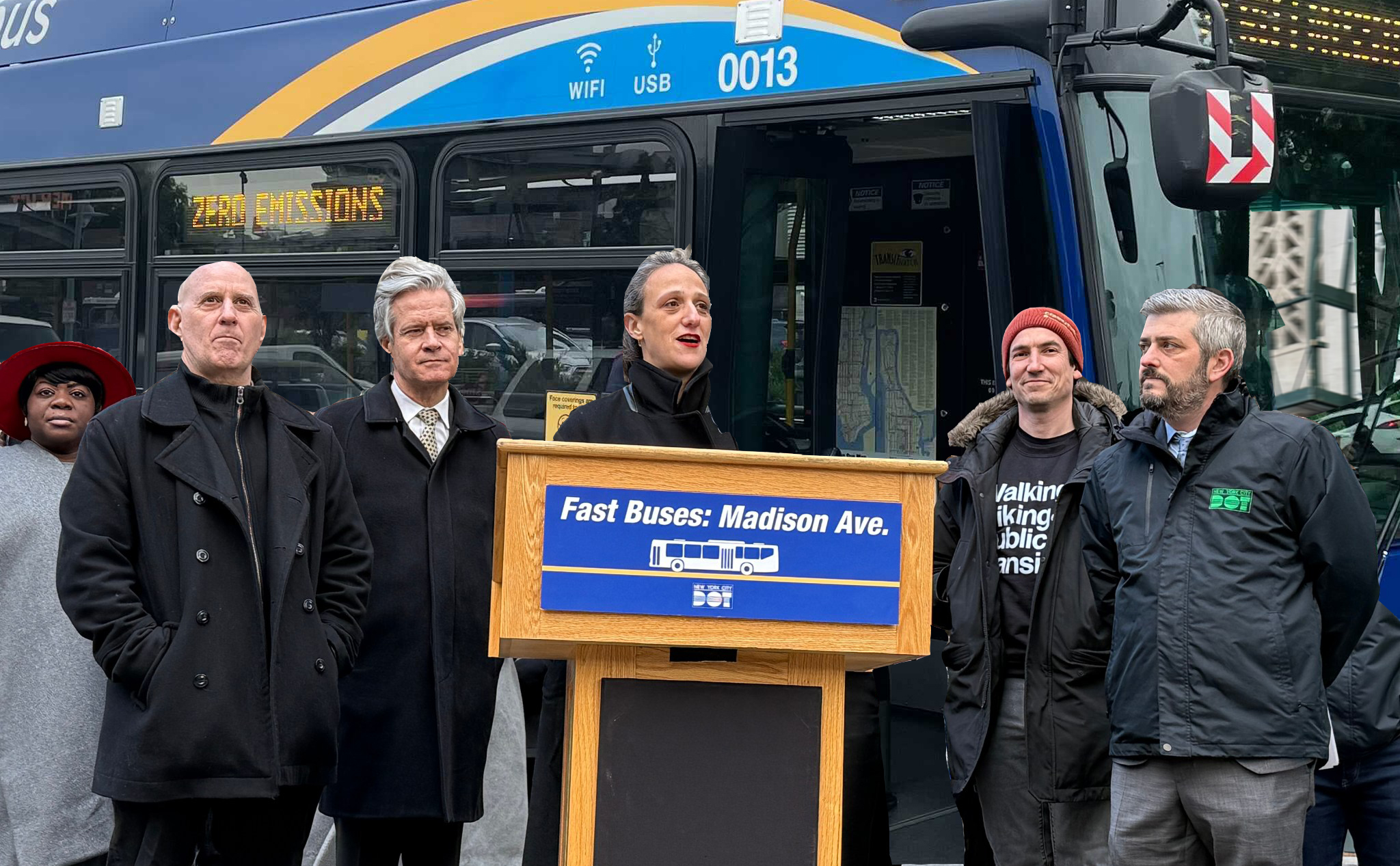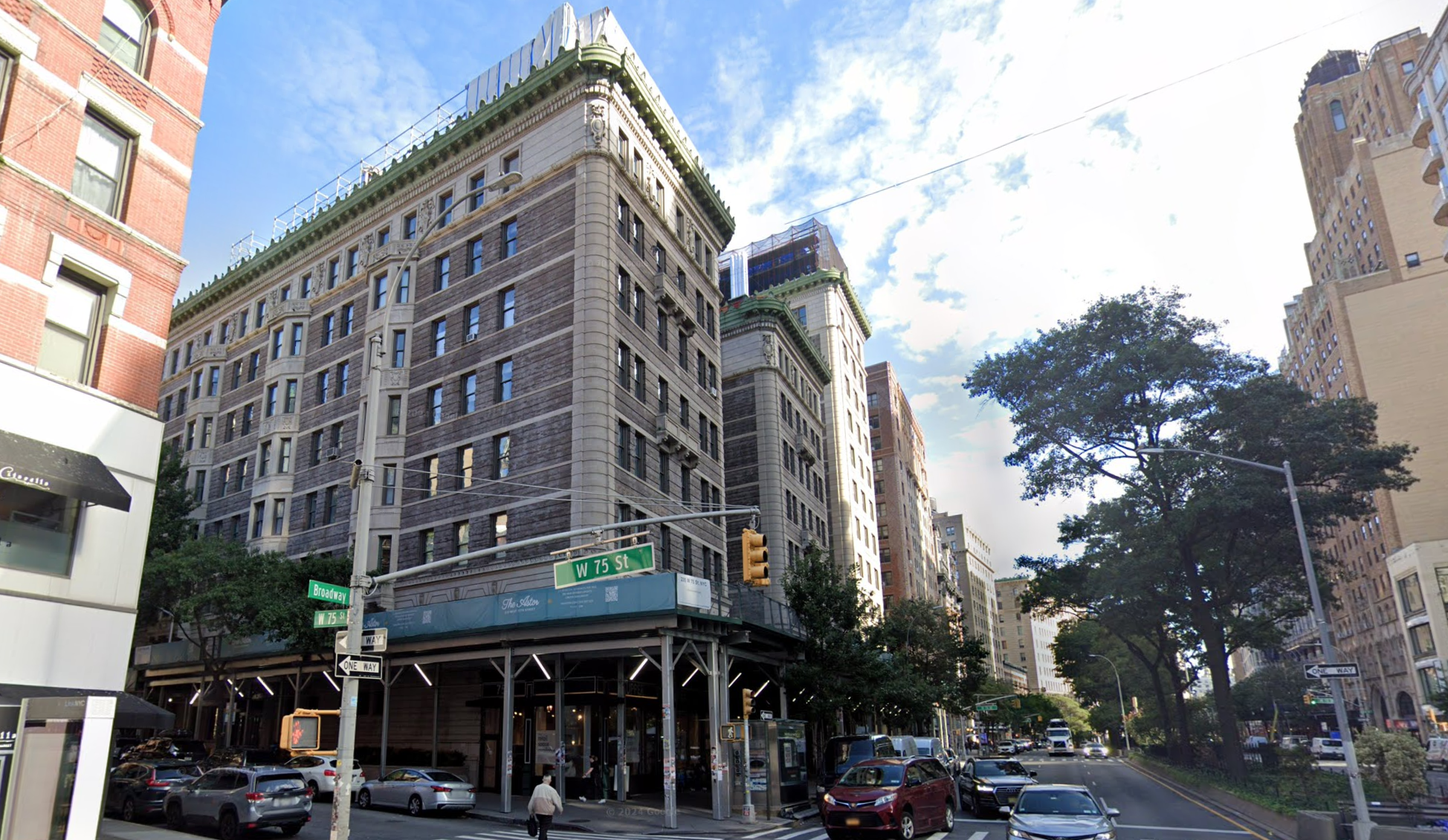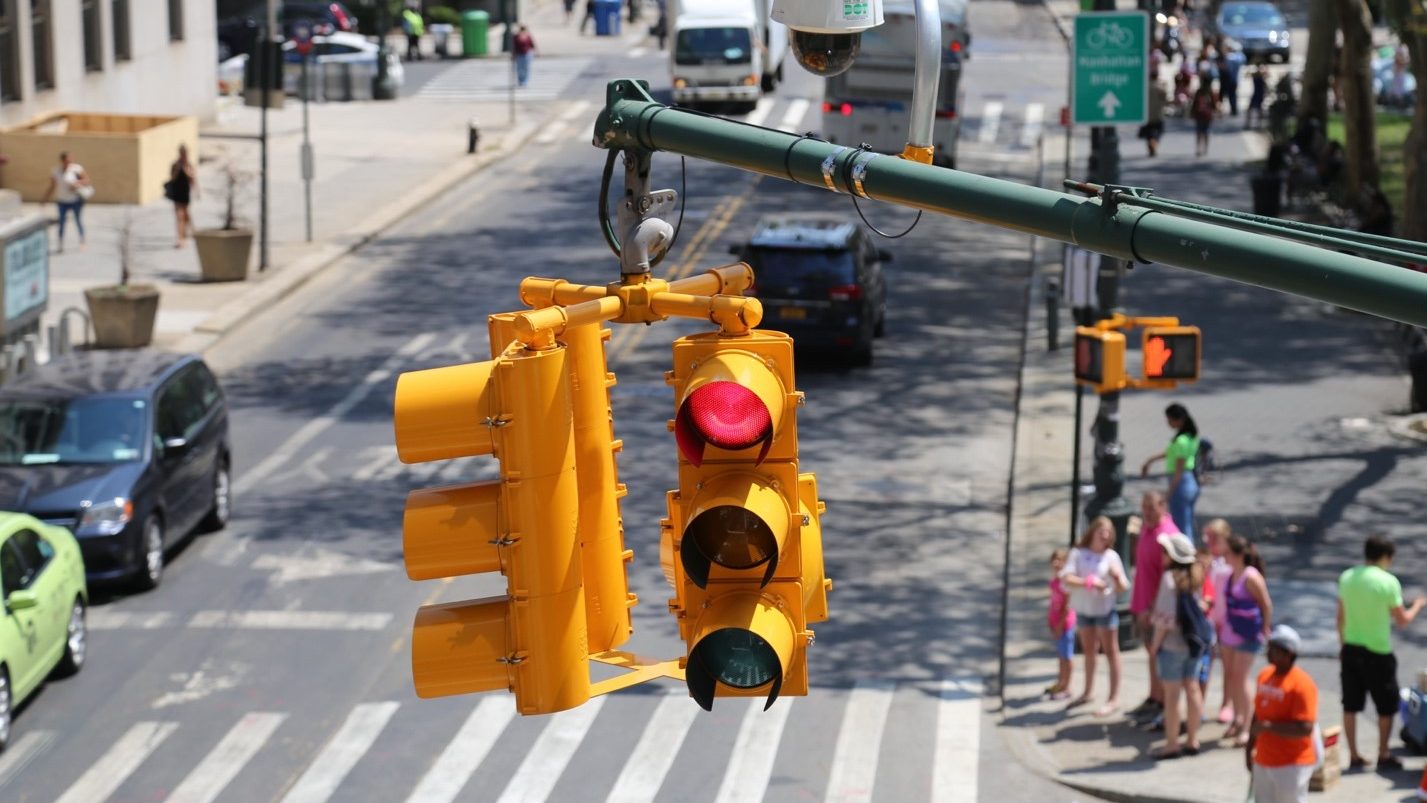Is Uber going to pull an Uber on bike share, too?
The company, which is lobbying the city to get into the bike-share business, says New Yorkers would take 1 million of their 26 million daily trips on dockless e-bikes — if (and it's a big if) the city deployed 100,000 to 200,000 bikes, or roughly 10 to 20 times the current Citi Bike fleet.
At the moment, the city only lets Uber's JUMP Bikes and other dockless bike-share companies operate in designated pilot zones outside of Citi Bike's exclusive center-city service area. But an Uber-commissioned report by the Boston-based firm Steer suggests that those restrictions are preventing exponential growth in cycling — from just 1 percent of all daily trips to a possible 4 percent [PDF].
"[Dockless bikes] have been operating [in] a sliver of the Bronx, a sliver of Staten Island, and a sliver of Queens," Uber Senior Policy and Communications Manager Josh Gold said. "If you had more availability and the service was more reliable throughout the entire city, you would see more people switching to bikes."
The report estimates that of the 26.4 million trips taken every day, roughly 10.3 million are “potentially switchable” to e-bike because they are made by foot, motor vehicle or public transit. That number gets pared further because some trips won't likely be converted, such as trips by individuals who are too young or too old to bike, trips that are shorter than .6 miles or longer than 9.3, trips with luggage, and trips beginning or ending outside of the city.
In the end, 1 million trips could be made on e-bikes — but here's the catch: The city would have to let companies to deploy a whopping 100,000-200,000 e-bikes, the report claims.

Of course, simply plopping tens of thousands of bikes — sort of the Uber approach to transportation — won't have much of an impact without safe biking infrastructure.
"This study speaks to the need for more biking infrastructure — more availability of bikes and more protected bike lanes," Gold said. "If we’re really going to push for mode switch ... we [need] services that are available to the whole city and reliable to the whole city."
In other words, the report doesn't account for the fact that in many of the corners of the city, streets aren't designed for safe biking. New York City only recently legalized pedal-assist e-bikes, but they haven't caught on in cities where they've been legal for longer — at least not on the scale anticipated by the JUMP/Uber report.
"All this is saying is that e-bikes have the potential to get more people riding bikes, which is pretty cool but hasn’t happened yet," said Dani Simons of the Regional Plan Association. "The infrastructure still isn’t there in many parts of the city to make cycling a viable form of transportation to greater numbers of people."
JUMP is currently jostling with competitors for the right to bring even more bikes to neighborhoods outside of the current Citi Bike service area, where Lyft-owned Citi Bike operator Motivate has exclusive operating power.
The Citi Bike system is popular, but has not expanded beyond Manhattan below 125th Street, the western edge of Queens and parts of Brownstone Brooklyn. The company is also just coming out of a crisis-level hardware shortage. In September, Streetsblog revealed that the company had less than 60 percent of its supposedly 12,000-strong fleet of bikes out in the field.
Asked whether the Steer report was meant to challenge the continued viability of Citi Bike's docked system, Gold replied, "You can read what you want into it."
Citi Bike's limited pedal-assist e-bike pilot, consisting of about 200 bikes, has been popular, with e-bikes being ridden an average of 14 times per day, the company said, although those numbers are at least partially the result of scarcity. In a statement, Motivate spokesperson Julie Wood rejected the argument that it would take hundreds of thousands of bikes to reach one million daily rides.
"We believe Citi Bike ridership would be much higher than this with a similar number of pedal-assist bikes," she said.
That's a big claim from a company with ebikes in the dozens, not hundreds of thousands. If Citi Bike is really claiming it could serve 1 million trips per day all by itself, most cycling advocates would want to call that bluff and demand that the company, and the city, prove it.
Uber:Jump Report on Shared ... by on Scribd
